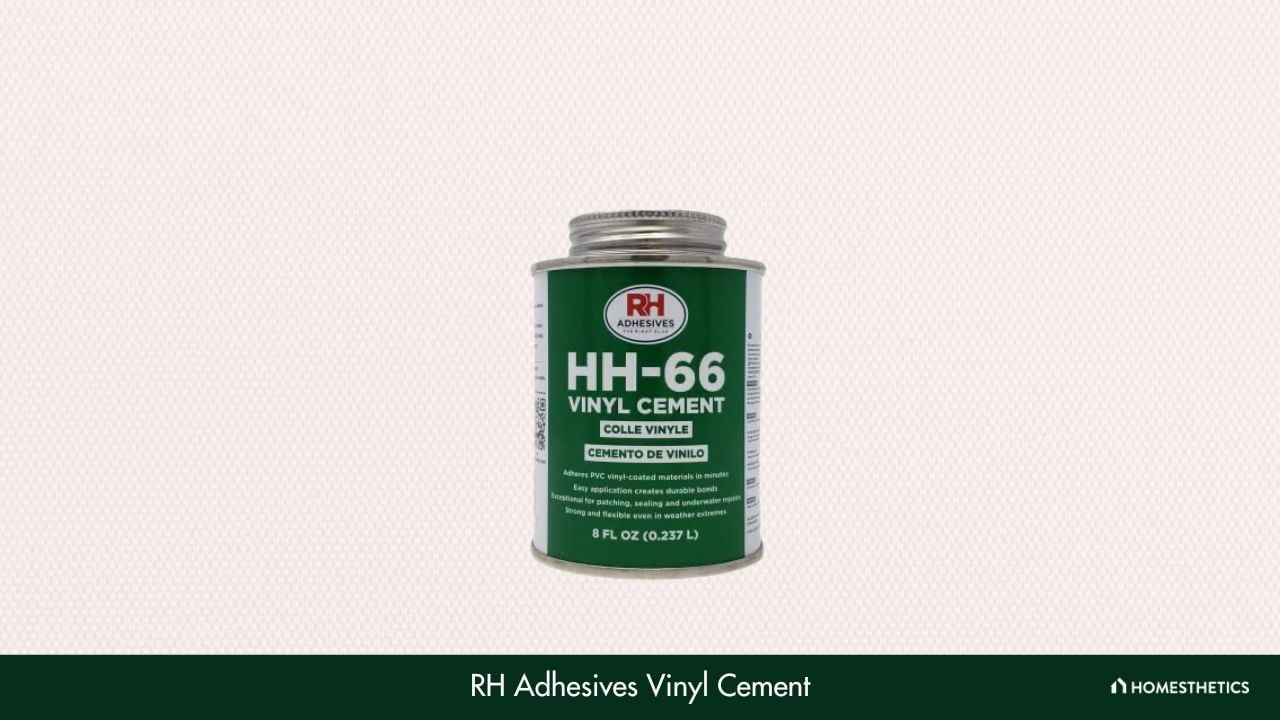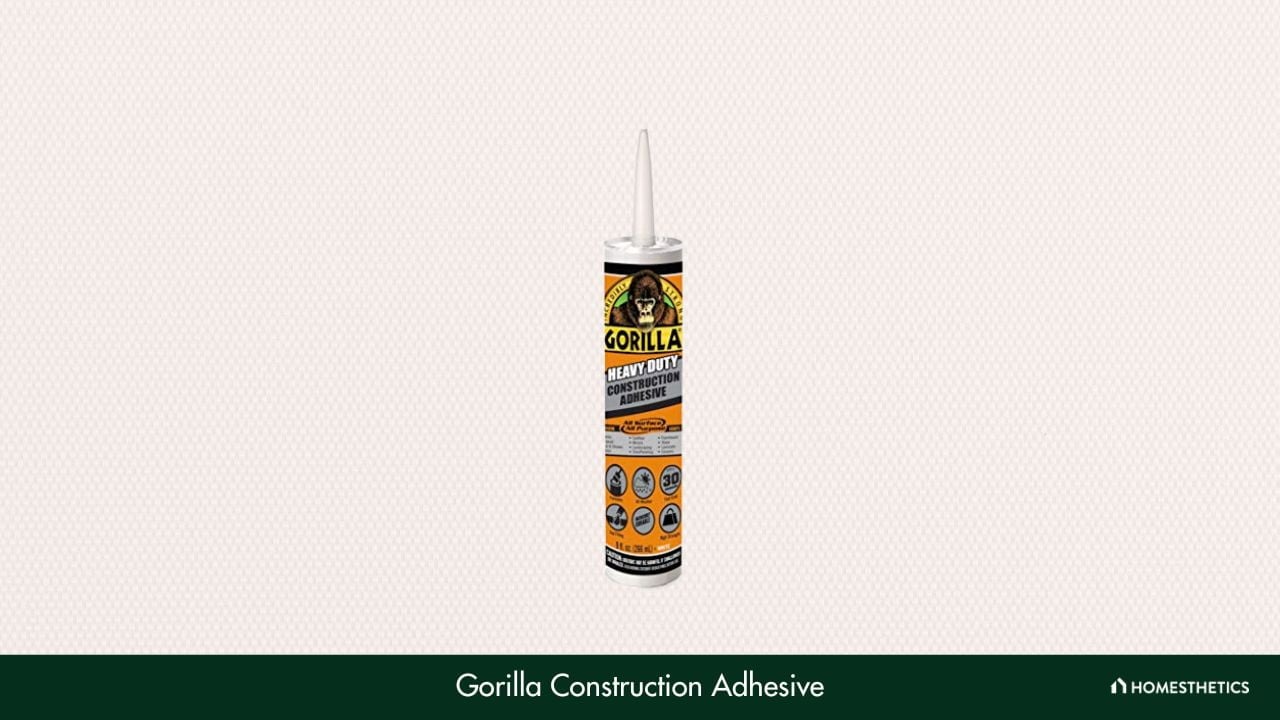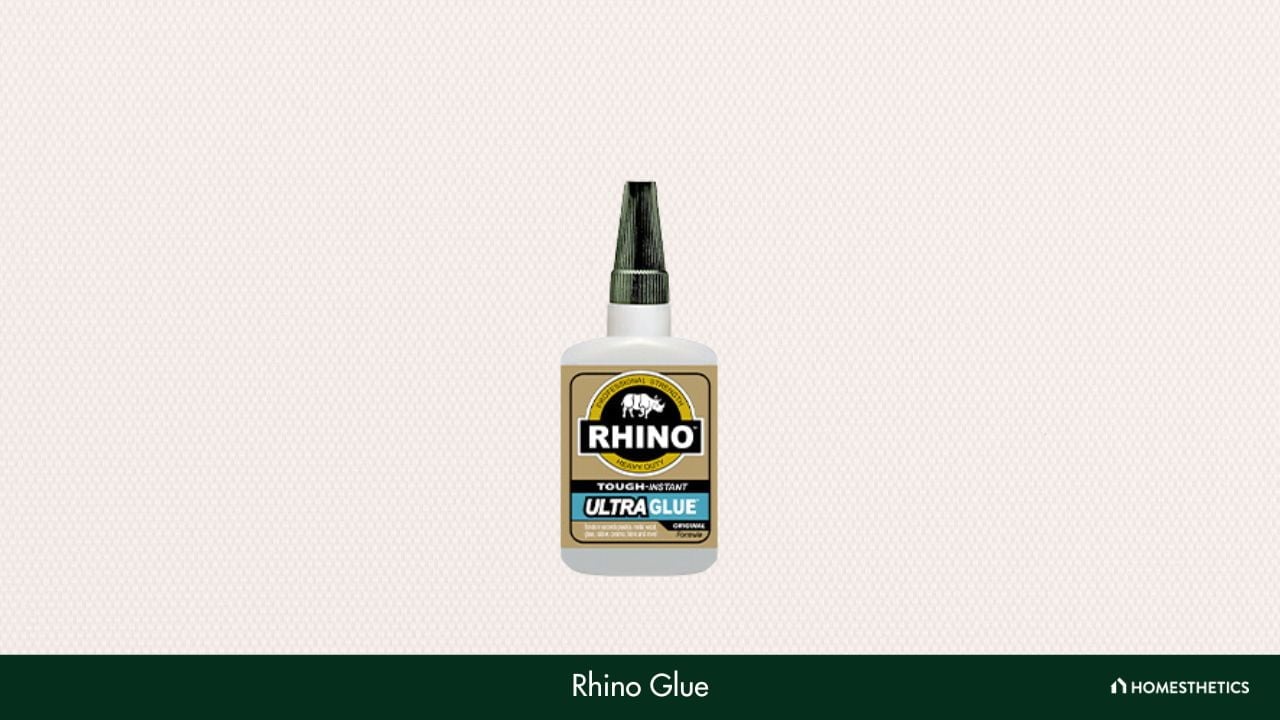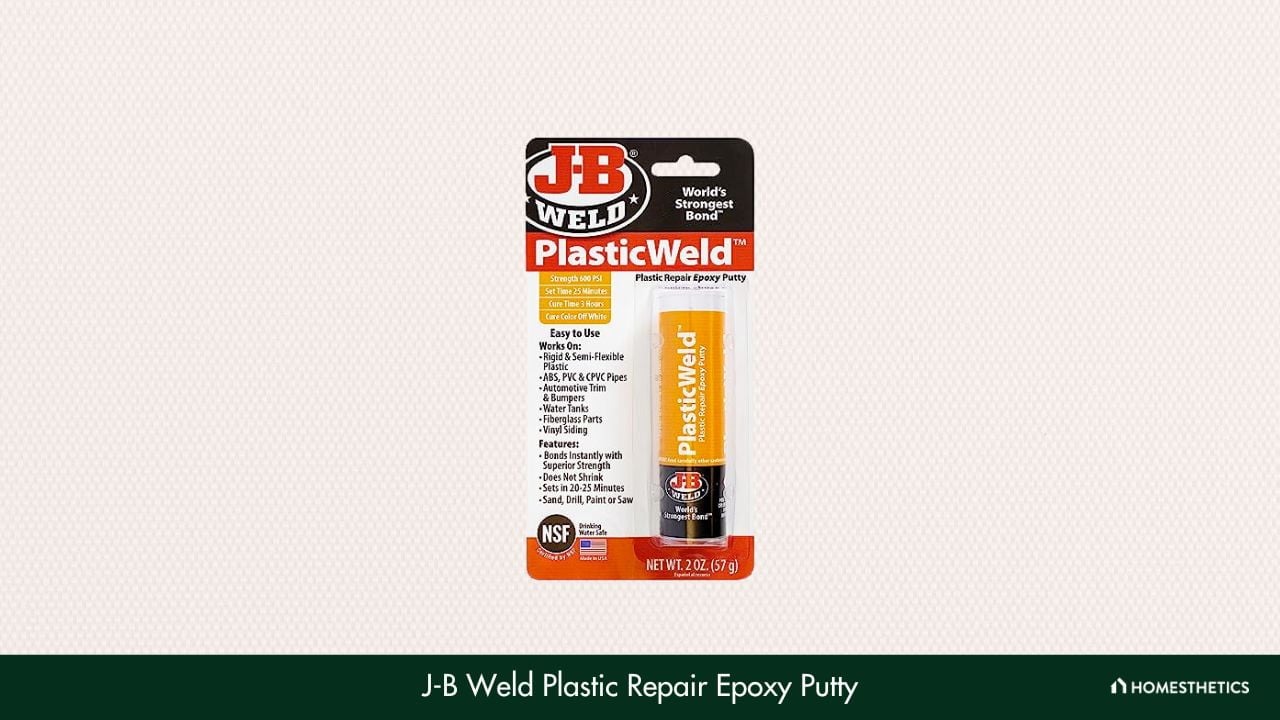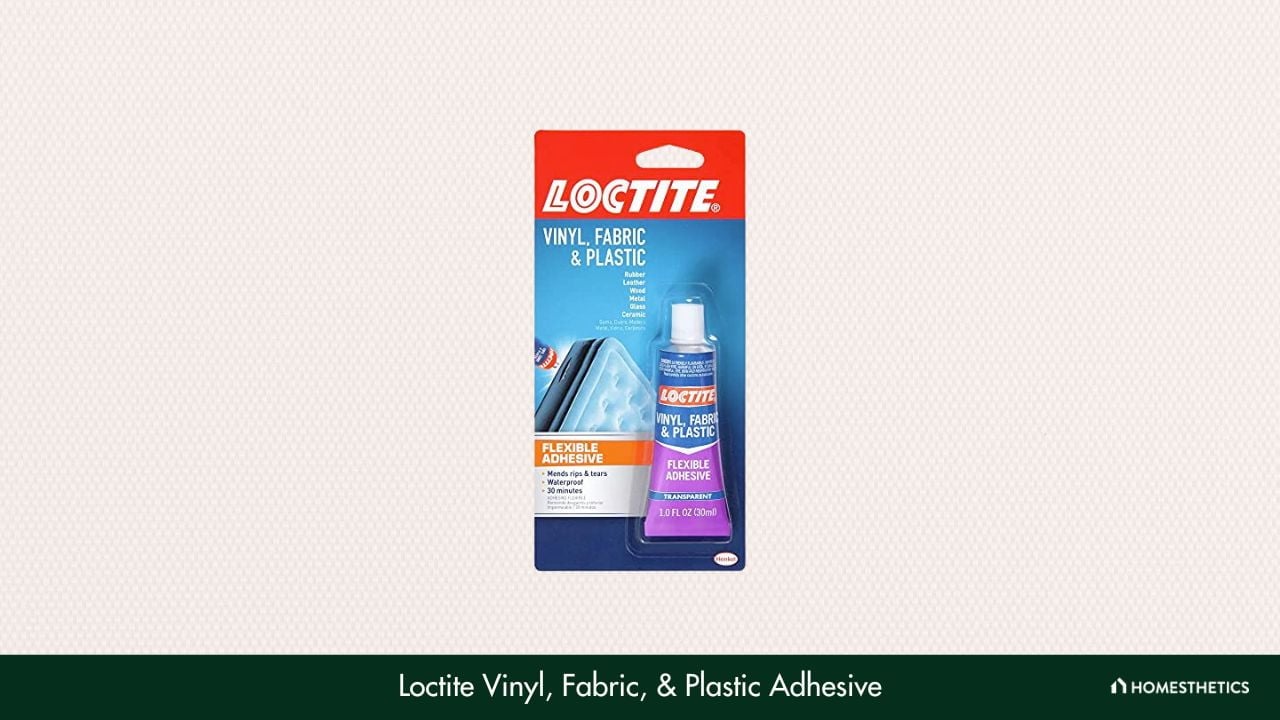The best glues for vinyl are specially formulated to bond with this durable yet flexible material, offering strong adhesion without compromising flexibility, critical for surfaces that expand, bend, or endure frequent use. Whether you're patching vinyl flooring, repairing upholstery, or fixing outdoor gear, the right adhesive ensures that vinyl surfaces maintain their integrity over time. Vinyl is widely used in both residential and industrial applications, but like all materials, it deteriorates with age, moisture, and friction. Instead of opting for costly replacements, using a specialized glue offers an affordable, effective solution for restoring vinyl to its original strength and appearance. In this guide, we’ve selected the 7 best vinyl adhesives, each tested for flexibility, drying time, water resistance, and ease of use, so you can confidently take on any vinyl repair project with long-lasting results.
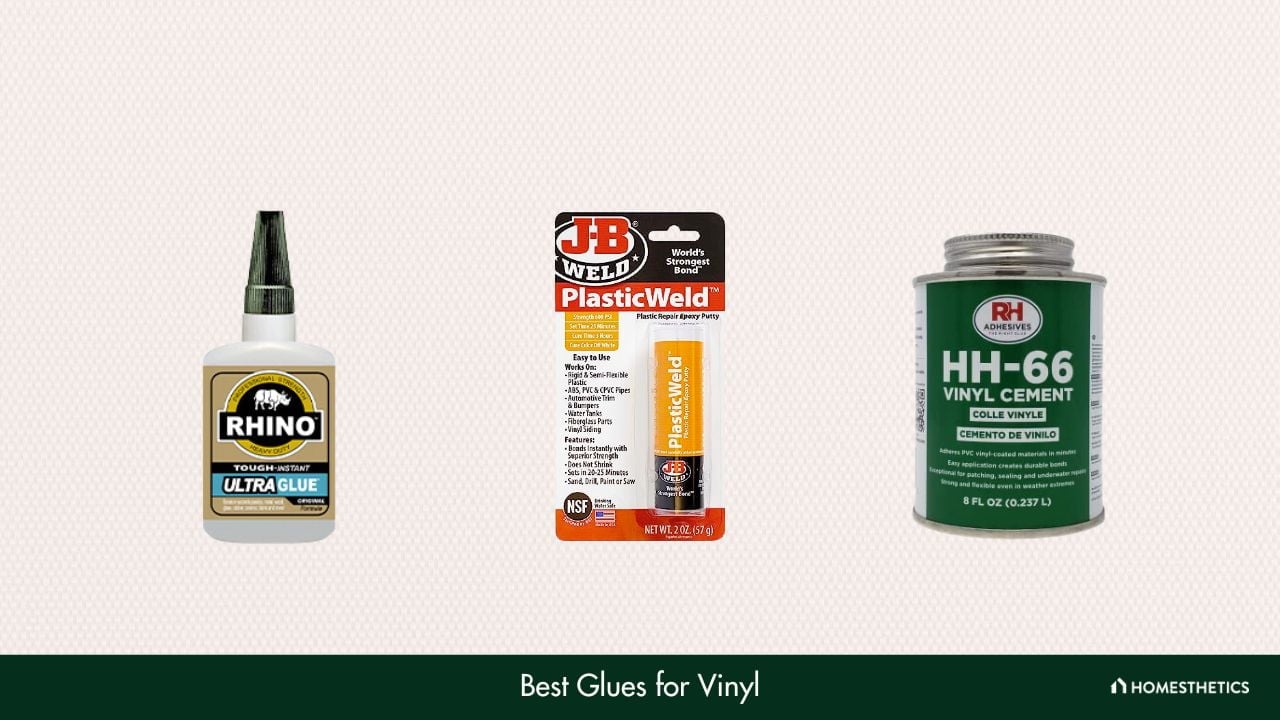
Listed below are the best glues for vinyl:
- RH Adhesives HH-66: The RH Adhesives vinyl cement stands out due to its resistance to weather extremes, oil, fuel, and grease. It sets in just 2 to 5 minutes, although for larger projects this might be too quick, compared to others like Gorilla adhesive.
- Gorilla Construction Adhesive: Gorilla adhesive is ideal for indoor and outdoor projects. Its strength lies in its quick set time (20 to 30 seconds) and flexibility, making it the most versatile adhesive compared to RH Adhesives HH-66. The necessary cutting of the nozzle may hinder storage.
- Henry 356-030: A vinyl adhesive ideal for floor coverings, Henry 356-030 touts an easy application and solid grip. It surpasses others like Gorilla in grip strength but requires the adhesive to dry out before use, unlike Rhino glue.
- Rhino Glue: Rhino glue is a sturdy adhesive with a versatile 1.4 fl oz volume formula. Its durability and strength surpass others like Henry 356-030. It might discolor vinyl, a downside absent in J-B Weld 8237.
- J-B Weld 8237 PlasticWeld: J-B Weld PlasticWeld is a unique two-part epoxy putty stick rated for plastics. It stands out from Rhino glue due to its malleable shape before setting,g but it doesn't handle moisture as well as RH Adhesives HH-66.
1. RH Adhesives HH-66 - Best for Vinyl Repair
The HH-66 adhesive is an incredibly strong adhesive designed to handle vinyl material as well as vinyl-laminated fabrics. It forms a barrier against extreme temperatures and has the ideal size for general maintenance use. This adhesive is highly resistant to any oil, fuel, grease, and other chemicals.
RH Adhesive’s HH-66 adhesive is the perfect choice for any vinyl material in different conditions. A great convenience is the option to apply it using a wet or dry application method - the sealant will hold steadily either way.
With the wet application possibility, the glue has a weatherproof nature. Applying it under harsh weather conditions yields the same outcome as an application in average weather. This makes it ideal for even submerged repair work; it can hold its own despite being exposed to water.
Additionally, the application process itself is relatively easy and quick. The drying time was extremely fast; within minutes, the bond had been made.
An already easy application process is made easier by the clear color of the glue. Seeing where it is being applied is a great help in having a clean application.
Drying times on the HH-66 vary depending on the temperature and climatic conditions. Under high temperatures, the glue will stick quickly, sometimes within seconds. But for those working with a large surface area, it may be a nuisance to have to reapply every few inches repeatedly.
What We Like
- Wet and dry application
- Waterproof
- Ideal for patching and sealing jobs
- Resistant to temperature and extreme weather
What We Don’t Like
- Fast drying time is unsuitable for large areas
2. Gorilla Construction Adhesive - Best for Indoor/Outdoor Projects
From a respected brand in the adhesive market, Gorilla offers a fantastic construction adhesive product. It has a strong bond with weather resistance and is ideal for both indoor and outdoor projects. It is versatile in the different surfaces it can be applied.
Not to be confused with Gorilla’s iconic super glue, this construction glue is a durable, heavy-duty product. It is straightforward to apply and use with its versatility. What’s more, the fast dry time brings even more usability for easy application.
It flexes and is fully waterproof when dried off, so using it on outdoor projects brings no risks from natural elements of water or impact. Additionally, it can be sanded down and painted to give a flush look with the material when dried.
The flexible nature of this adhesive makes it a suitable choice when filling up gaps or for surfaces that have spaces between them or are porous. Uneven surfaces were no problem in the application or filling in the recesses.
One caveat about using this heavy-duty adhesive is the design of the bottle. To have the adhesive be applied, the tip of the nozzle must be cut. However, there is no indication of where to cut, and if cut wrong, the cap can be impossible to replace and store away.
What We Like
- Low odor and VOC-compliant
- Secures quickly
- Easy application
- Versatile application
What We Don’t Like
- The nozzle must be cut and can compromise storage
3. Henry 356-030 - Best for Floor Coverings
A highly recommended and used adhesive for floor covering adhesives is this multi-purpose adhesive from Henry. Whether it is a professional or a small home project, this can serve its purpose well in easy application and versatility. It has an incredible grip, so once applied, there is no chance for it to be removed easily.
Overall, the design of the container makes the adhesive easily accessible with a top-open lid. Scooping the adhesive out and applying it at your discretion is excellent for any sized project or task you have.
When it comes to the bonding power that the Henry adhesive has, it remains solid in performance. Following the instructions during application is vital to have the best results; that means letting it dry a bit to a sticky consistency.
Once the glue has been laid down, it is easy to clean up so long as it is before it has set. This makes for a clean and controlled application overall with the best quality results. A damp towel is enough to tidy up the edges of the application or clean up any excess glue.
One advantage to this adhesive is the easy cleanup with a damp towel. It remains wet until it comes into contact with air. This can be a nuisance, but should be considered nonetheless. It can also be considered a drawback as the glue will be ineffective if it is dampened even a bit.
What We Like
- No petrochemical solvents or ammonia
- Simple application method
- Low VOC and odor
- Sticky grab to maintain adhesive grip
What We Don’t Like
- Glue must dry out before use
4. Rhino Glue Heavy Duty
The Heavy Duty glue variant from Rhino Glue has a rugged and extremely versatile formula. It can work on a range of materials with different densities and textures. It is a solid and capable adhesive with a fast-drying time and durability that can withstand many obstacles.
When working with adhesives, the application is the most crucial part. Applying Rhino heavy-duty adhesive to the material and allowing it to bond is an easy experience. With the short bond time, there was no fumbling with clamps or repositioning necessary.
Additionally, the actual strength of the glue is incredible. Only a small amount of adhesive is required to create a lasting bond between the two surfaces. While this is an incredible feat with such a small amount of glue, it also means a regular container lasts a long time.
What’s more impressive is the durability alongside the strength of the adhesive. Rated to withstand heat and moisture as well as impacts, the Rhino adhesive can secure any surfaces together for a lasting bond.
Making mistakes is bound to happen at times while making repairs or working on a project. With the Rhino glue, there is a strong grip formed almost instantly. As such, if used on vinyl, there is a possibility that the adhesive will bond and discolor the material, leaving little room for error.
What We Like
- Fast drying and cure time
- Compatible with many material types
- The small amount required for use
- Strong durability
What We Don’t Like
- Can discolor vinyl
5. J-B Weld 8237 PlasticWeld
Truly a unique option from J-B Weld is this two-part epoxy putty stick. Once mixed together, it creates a polymer that can be manipulated to adhere and fill up gaps in the material's surface. It has been rated to work with plastics and similar materials.
One of the most remarkable features of this adhesive is the NSF certification. This guarantee opens up the range of possibilities and use-case scenarios for repairs and projects involving potable water.
Drying out the glue is an easy 20-25 minutes, with a complete cure setting in within two to three hours. Once cured, the glue has an off-white color to it. Additionally, the modifications that can be done after curing to have a cleaner result are great features to have.
As for the strength of the adhesive, it has a strength of 600 PSI, which is by no means a light performance. When being kneaded to fit into a gap or recess, the glue may be weak, but it won’t be going anywhere once it has been allowed to settle.
Waterproofing does not seem to be a strong suit for the J-B Weld adhesive. It has been noticed that when using this glue in projects exposed to moisture, the epoxy takes a hit. When used on pipes or outdoor projects, the adhesive would not be able to maintain the bond.
What We Like
- Easy mixing of epoxy
- Malleable shape before setting
- Instant bonding
- Can be sanded, painted, and cut when dry
What We Don’t Like
- Not ideal for projects involving moisture
6. Loctite Vinyl, Fabric, & Plastic Adhesive
Coming out of Canada, this adhesive by Loctite is a great tool for vinyl repairs as well as plastics and fabric. It has a long-lasting repair that remains clean in its finish even after extended periods of time. With waterproofing and a flexible consistency even when dry, it is capable of indoor and outdoor use.
Having an adhesive that is flexible enough to maintain its bond even after drying is extremely useful when working with plastics. The Loctite adhesive performed well in keeping its adhesion and also had a clean finish to it.
As it dries clearly, there is no need to compromise a repair for a messy appearance. The clear finish will make it seem as if no glue is necessary in the first place. This clear finish is maintained over time with no yellowing or becoming brittle, which gives the repair that much more longevity.
Of course, when it comes to vinyl and plastic adhesives, waterproofing is an important feature to have. The waterproofing in the Loctite glue is up to par and effectively keeps moisture out well. Indoor and outdoor repair jobs are no issue for this adhesive.
Loctite has specifically designed this adhesive to work with plastics and similar materials like vinyl. Joining these materials to different material types and densities can cause the glue to underperform. Special care must be taken to ensure the material falls under the use cases of this adhesive.
What We Like
- Long-lasting repair
- Waterproof formula
- Flexible for plastics, fabric, and vinyl
- Easy application tube design
What We Don’t Like
- Not versatile; works only on materials listed
7. Henry Vinyl Tile Repair (VCT) Adhesive
A straightforward adhesive, this vinyl tile repair adhesive from Henry does what it says and does it well. Applying this glue to vinyl tiles will have them set securely with little evidence of a repair ever being done. Indeed, a valuable tool to have, be it for a complete renovation or a touch-up of your vinyl tiles.
If working on vinyl tiles, it is a no-brainer to have a bottle of Henry Vinyl Tile Repair adhesive handy. It is quite literally designed to adhere to vinyl tiles specifically, so it has all the qualities you might need in a vinyl adhesive.
Having flexibility in the glue’s consistency before hardening was great for filling in uneven surfaces before placing the tile. Additionally, working with flexible plastics becomes more manageable when using adhesives of similar viscosity.
Once the glue has been set and hardened, it forms an almost permanent bond between the base flooring and the vinyl tile. Only a small quantity is necessary to create this strong adhesion.
Once the glue hardens a bit to a tacky consistency, it can be easily applied to the surface and worked with for a clean result. The finished product blends in with the rest of the tiling and is almost imperceptible.
While the Henry vinyl tile adhesive may be designed for repairing and placing tiles, it is not the one-stop solution to every vinyl tile-related problem. When dealing with repairs where only a portion of the tile has become loose, it is lacking. It performs best when the full tile is replaced.
What We Like
- Simple application process
- Strong adhesion
- Fast repair
- Flexible consistency
What We Don’t Like
- It does not perform well for partial tile repairs
What is the Best Glue for Vinyl?
If you are looking to identify the best glue for vinyl, a table is provided below for a comparison of details such as quantity per package in units, volume measured in fluid ounces, set time in minutes and seconds, cure time in hours and minutes, dry color, and resistance characteristics.
| Product | Quantity | Volume | Set Time | Cure Time | Dry Color | Resistance |
|---|---|---|---|---|---|---|
| RH Adhesives HH-66 | 1 Can | 8 fl oz | N/A | 2 to 5 Minutes | Clear | Waterproof, Withstands Weather Extremes, Oil, Fuel, Grease, & More |
| Gorilla Construction Adhesive | 1 Cartridge | 9 fl oz | 20 to 30 Seconds | 24 Hours | Clear | Weather-resistant, Waterproof |
| Henry 356-030 | 1 Container | 31.98 fl oz | N/A | More than 24 Hours | Yellow | N/A |
| Rhino Glue | 1 Bottle | 1.4 fl oz | 60 Seconds | 20 Minutes, Overnight | Clear | Withstands Heat, Moisture, Impact, Vibrations, Shock |
| J-B Weld 8237 | 1 Stick | 2 fl oz | 20 to 25 Minutes | 3 Hours | Off-white | Withstands 250°F to 300°F |
| Loctite Adhesive | 1 Tube | 1 fl oz | 10 Minutes | 24 Hours | Clear | Waterproof, Withstands Bending & Torsion |
| Henry Vinyl Adhesive | 1 Bottle | 6 fl oz | N/A | N/A | Yellow | N/A |
Buying Guide for the Best Vinyl Glue
Investing in an adhesive to touch up vinyl is a smart choice, not just for the durability of the vinyl but also for environmental care. Vinyl does not break down naturally, so to keep it out of the dumps, you should repair your vinyl as much as possible.
Maintaining vinyl requires specific qualities in the adhesive; otherwise, there is a chance of it not working. Here are things you should keep in mind when looking for a suitable glue for you.
Types of Vinyl Glues
Vinyl glue has four types that differ in their strengths and use cases. They are cyanoacrylates, epoxies, polyurethane, and silicone glues. Each one is suited to a specific kind of vinyl and performs differently.
Cyanoacrylates are also known as superglue and have a fast setting time. They use air to harden and create a solid mesh-like bond to the surface of the material.
Epoxies are traditionally a mixture of two formulas to create a strong adhesive. These glue types are great with rigid types of vinyl as they can hold shape as well as fill any recesses.
Polyurethane glue is versatile in the materials it can adhere to. Thin and flexible vinyl falls under these material types. It requires the preparation of the surface to create abrasions for the glue to grip.
Silicone is suitable for vinyl and has a definite shape. The strength of the bond is determined by the amount of contamination on the material's surface. Therefore, keeping it dust and debris-free is of utmost importance when gluing.
Unique Features
With variations in formula across manufacturers and brands, there are certain features in the glue that set it apart from the others. Whether it is in compatibility with vinyl or other areas, every adhesive is unique.
Taking note of what sizes the glue bottles are available in is important. Not having enough adhesive to complete a repair can mess up the entire process; leaving areas incomplete just means another necessary repair shortly.
There are a variety of sizes for glue bottles, some even coming in multiple packs. Determine how much glue is suitable for your project and buy accordingly.
On the package of the bottle or product description is a list of compatible surfaces the glue was designed for. Match the material you are working with to an adhesive that is able to form a bond on it. Using the wrong glue with the wrong material can result in a weak or nonexistent bond.
The application of the adhesive is one of the most critical steps in the repair process. A proper application can ensure the repair lasts longer and also has a more clean result; the repair will be flush with the material.
Additionally, there are situations where the surface to be glued is in a small, hard-to-reach area. To help increase accessibility and ensure a clean application, the nozzle and tube shape of the bottle should be taken into account.
Depending on the extraction method of the glue, it can determine how steady the glue is removed. For example, a squeeze bottle allows you to control how quickly the glue is removed for slow, precise work or faster and larger applications. Furthermore, the nozzle design can affect how finely the glue can be applied.
Surface Preparation
Vinyl is a smooth surface that picks up dirt and oils easily. To ensure the bond made is durable, the surface should be prepped before applying the adhesive.
Cleaning the surface to remove any contaminants is the first step to preparing the surface. Next, sand or rough up the surface to create a texture that the adhesive can grip and create the bond. These small measures will go a long way in keeping the strength of the adhesion at its most efficient and stand the test of time.
What types of glues are suitable for bonding vinyl materials?
Several types of glue are suitable for bonding vinyl materials. Contact cement and cyanoacrylate can be effective, as can specific vinyl adhesives, which have been formulated for optimal bonding with vinyl. When choosing a glue, it's crucial to ensure it is suitable for vinyl to avoid potential damage or weak bonds.
Is it necessary to prepare the vinyl surface before applying glue?
Yes, it is generally necessary to prepare the vinyl surface before applying glue to ensure a strong bond. This usually involves cleaning the area to remove any dust, dirt, or oils that could interfere with the adhesive. The method of preparation can depend on the specific type of glue, and the manufacturer's instructions should always be followed for the best results.
Can I use glue for vinyl on other materials?
While it's technically possible to use glues for vinyl on other materials, their effectiveness can vary depending on the specific material. Vinyl adhesives are formulated specifically to bond with the plasticizers in vinyl and may not adhere as effectively to other materials. For the best results, it's recommended to use an adhesive that is specifically designed for the material in question.
How to remove glue residue from vinyl surfaces?
To remove glue residue from vinyl surfaces, a gentle yet effective method is often to apply a small amount of rubbing alcohol or adhesive remover to a soft, lint-free cloth and then rub the residue gently until it comes off. It's crucial to avoid abrasive tools or harsh cleansers that could damage the vinyl's finish. Always perform a spot test in an inconspicuous area first to ensure the cleaning agent won't harm the material.
Can I paint over glued vinyl surfaces?
Yes, you can paint over glued vinyl surfaces, but proper preparation is crucial for good results. This preparation might include cleaning the surface thoroughly, sanding it lightly to help the paint adhere better, and applying a suitable primer. It's important to note that vinyl-specific paint or a paint that is suitable for plastics should be used for best adhesion and durability.
After a comprehensive analysis of the best glues for vinyl, it's essential to highlight the top three expert recommendations. These exceptional selections were determined based on their performance, durability, versatility, and user reviews. Each stands out for a particular purpose, ready to fulfill your specific vinyl adhesive needs.
Amongst the seven best glues discussed, RH Adhesives HH-66 proves to be the best for vinyl repair. It offers an incredibly strong bond, designed to handle vinyl material as well as vinyl-laminated fabrics. Additionally, this adhesive demonstrates exceptional resistance to extreme temperatures and various chemicals, making it an ideal option.
For indoor and outdoor projects, the Gorilla Construction Adhesive is a good option. Not only does it ensure versatility in the surfaces it adheres to, but it also provides a strong bond that is both weather-resistant and waterproof. Equally important, it can be sanded down and painted to give a seamless look with the material when dried.
When it comes to floor coverings, the Henry 356-030 is the right choice. This multi-purpose adhesive is favored for its easy application, versatility, and exceptional gripping power. Its accessible containers make it suitable for projects of any size, and the cleanup process is straightforward with a damp towel.
In conclusion, our top three recommendations serve as a dependable guide for choosing the perfect glue for your vinyl project. Regardless of the situation at hand, be it repair work, indoor and outdoor projects, or floor coverings, these expert recommendations will make your decision process smoother and deliver outstanding results. So, gear up for your next vinyl project, knowing you have the ideal adhesive for the job.

